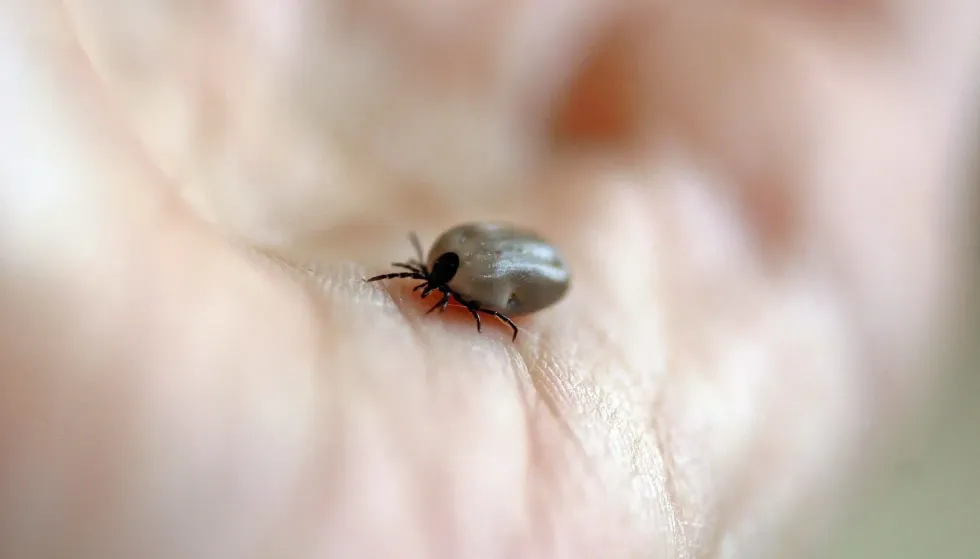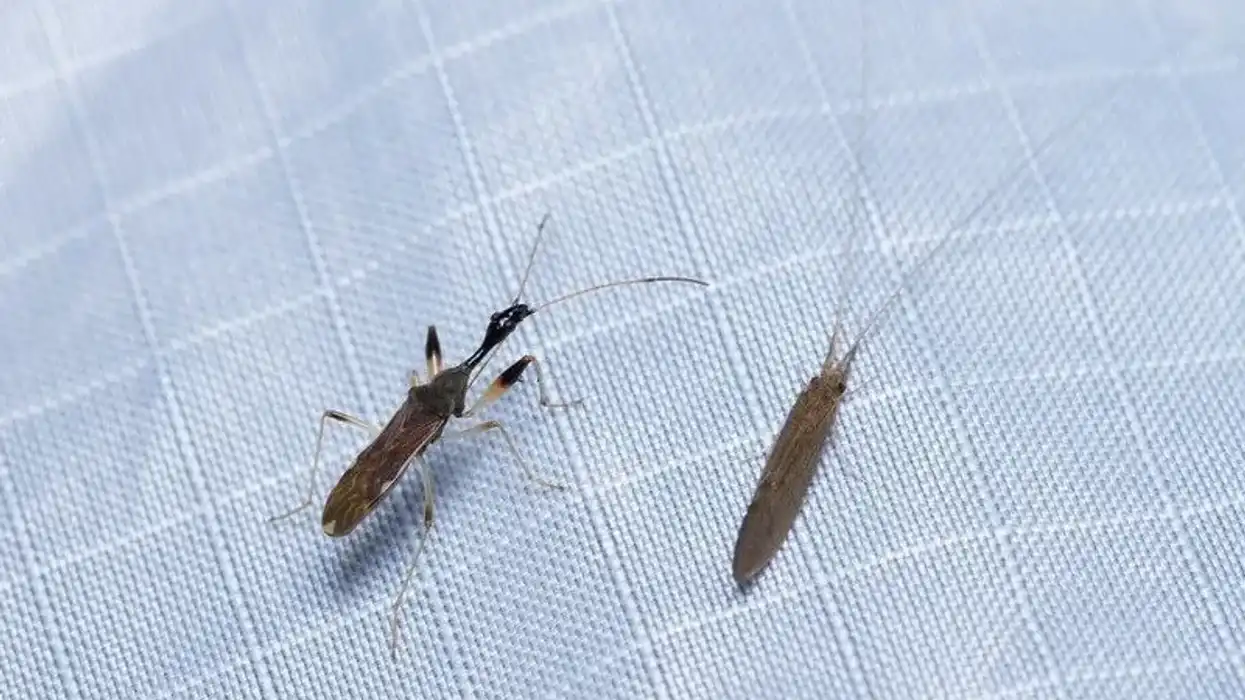As summer arrives and spring bids you goodbye, you and your four-legged pal are most likely to get in trouble. Why?
Because summer is the season of nasty ticks, especially wood ticks, that attach to you and suck on your blood. They leave behind tick-borne diseases like Rocky Mountain spotted fever and tularemia. However, not all of these ticks spread diseases.
Only three types of ticks are harmful, this includes the blacklegged tick (aka deer tick), American dog tick (wood tick) and lone star tick. These ticks don't look too different from each other, so it becomes tricky to identify them.
Ticks were believed to be transmitters of Lyme disease but scientists have proven otherwise. But these pests are still the primary carriers of Rocky Mountain spotted fever (RMSF). Read on for some interesting Wood Tick facts. To learn more about Wood Ticks for keeping your pet and yourself safe, read on.
If you are interested in other animal species, you should check out giant water bug facts and wheel bug facts.
Wood Tick Interesting Facts
What type of animal is a wood tick?
If you notice a big tick on you or your pet's body, it is probably a female as their size becomes enlarged after feeding. Their larvae have six legs, and a fully grown adult has eight. Wood ticks are often confused with deer ticks that spread Lyme disease, while wood ticks don't spread Lyme disease.
What class of animal does a wood tick belong to?
Wood ticks belong to the class arachnid, and they are placed in subclass acarina. This pest species has distinctive body features that differentiate them from the rest of the class, because instead of the normal division of body in the cephalothorax and abdomen, they are divided into two altogether different parts, an idiosoma, and a gnathosoma.
These ticks are active from mid April to September. Larvae are active from March to July, and nymphs are active between June until early September.
How many wood ticks are there in the world?
There are approximately 700 hard tick species around the world and around 90 different species live in the states. Their number increases every year in the month of April through to September, so its hard to ascertain how many there are exactly.
Where does a wood tick live?
Wood ticks (American dog tick) live in places where they can easily find their hosts which include livestock and pet animals. They are usually found in wooded areas or on tall grass so that they can easily jump and latch themselves onto their host.
They are most commonly found in the Eastern United States and the West Coast.
They are related to mites and spiders and are most commonly found to be inactive during the winter season. Depending on the area you live in, wood ticks have different peak activities.
What is a wood tick's habitat?
Wood tick (American dog tick) habitats can be found just about anywhere ranging from the playground to your backyard. They live in places where it is easy for them to jump onto humans and animals, and they don't have any difficulty in finding their hosts.
They are found in wooded or grassy areas and are also referred to as Rocky Mountain ticks.
Who do wood ticks live with?
Wood ticks live close to their possible hosts like birds, deer, cats, rodents, and possibly humans. They are found in places where they can attach to their hosts easily, such as wooded and grassy areas. However, they can also be found in urban areas, as well as beaches in coastal locations.
How long does a wood tick live?
Wood ticks can live up to three years if they find a host in all three stages of their life. They may feed on blood to complete the life cycle or else they die before their actual life expectancy.
Ticks typically need to find a host within 30 days, but some can even survive for 117 days without a host. Once these ticks molt into nymphs, they can usually survive up to 300 days without food. All adults can live up to 600 days without food.
How do they reproduce?
Ticks reproduce both sexually and asexually. They reproduce asexually through parthenogenesis, which means females can reproduce without males. Their mating process depends on the time of the year and weather conditions.
Once they are fully fed and have a mate, female ticks detach themselves from their host. After falling from their host they try to find a warm, humid, and shaded place to lay eggs. After laying eggs the female dies.
What is their conservation status?
Wood ticks are Not Listed under any special status by IUCN, as they are abundant in population. There are more than millions of ticks all around the world, hence they do not face any extinction threat. The only threat that these pests face is from predators and pest control.
Wood Tick Fun Facts
What do wood ticks look like?
Wood ticks are wide, oval-shaped, and have flat bodies. These tick types are brightly colored, mostly in bright red color with gray or silver coloration on their bodies.
Females have gray spots behind their necks, and if you notice an engorged tick then most probably it is a female, since their size increases after feeding. Males however are smaller than females and have silver or white lines on their backs and do not increase in size after feeding. Larvae have six legs and adults have two extra.
How cute are they?
Although they are blood-feeding parasites, some people find them cute. When wood ticks are trying to find food, they climb on top of tall grass and spread their legs as if a toddler asking for a hug.
But do not be fooled by their cute appearance, as these pests are known as carriers of various diseases and their bite is very painful for humans as well as pets.
How do they communicate?
Ticks use semiochemical (or a signal) to communicate with each other. There are two types of tick semiochemical which are arrestment pheromones, and sex pheromones. Arrestment behavior takes place when a tick senses a chemical signal from other ticks and stops moving. And the sex pheromones are released by females to bring males in contact for mating.
How big is a wood tick?
Wood ticks are usually 0.125-1 in (0.31-2.5 cm) long in size with an empty stomach, after feeding the spot behind the female ticks increases in size whereas males remain the same.
How fast can a wood tick move?
Ticks don't tend to move that fast, their flying, hopping and running speed are way below average. They stay in places where they can find their hosts easily and conveniently. These pests usually crawl to find a place to bite.
How much does a wood tick weigh?
On an average scale, ticks weigh 0.0003-0.0004 lb (0.006-0.007 oz). The females witness an increase of 100 times their weight after feeding. The weight of these ticks can vary depending on the surroundings in which they are found.
What are the male and female names of the species?
There are no different names for male and female ticks. They are known as males and females respectively. The females are larger than males, but they don't have separate names.
What would you call a baby wood tick?
A baby wood tick is called a nymph. Wood ticks progress through four stages of development in life which includes the egg, larvae, nymph, and adult. The nymph tick is most active during summer and spring and is the size of a poppy seed.
What do they eat?
Wood ticks feed on the blood of living beings, they have a range of hosts like reptiles, amphibians, birds, pets, and humans. Adult ticks have eight legs and a pear-shaped body that fills with blood as they feed on the host body.
Are they dangerous?
Wood ticks are very dangerous as these pests transmit tick-borne diseases like Rocky Mountain spotted fever and tularemia (also known as rabbit fever). These diseases spread when the tick feeds on the blood of humans.
Tick bites can be very painful for humans as well as pets, resulting in symptoms like rashes around the wrists, nausea, fever and rashes around the ankles. In appearance, tick bites resemble a spider bite. Hence, in order to avoid tick bites, you must exercise precaution when you are in an infested area.
Would they make a good pet?
No, these pests won't make good pets. Although few people find wood ticks cute despite their parasitic behavior, no one would ever take tick as pets. Instead, you must avail professional pest control to get rid of ticks whenever you locate them otherwise you run the risk of tick bite.
Did you know...
Wood ticks are rare species of parasites. Unlike other pests that suck blood for a small amount of time, they feed for extended periods.
These pests bury their curved teeth securely deep into the skin of their host so that they can eat at a day's stretch. They require 24 to 48 hours of feeding till they can transmit the disease to their hosts. Wood ticks are not picky eaters, but they tend to attach themselves to pet dogs quite often.
They are easy targets of these ticks, as they play all day long in the grass. So, it is necessary to wash your pet with soap and water and undergo tick removal regularly.
Are wood ticks harmful?
Yes, wood ticks are very harmful pests that are known to be the carriers of Rocky Mountain spotted fever (RMSF). Tick bites can lead to symptoms like fever, nausea, rashes around the wrist and several others.
Though, contrary to popular belief, wood ticks are not the carriers of Lyme disease. It is advisable to avail professional pest control services to get rid of wood ticks as soon as possible.
What is the point of wood ticks?
Although they are a parasite, every animal has a special place in the food chain. They are an important part of a moist, dark ecosystem and serve as food for many reptiles, birds, and amphibians. They also help control the wild population, and scientists use them to check the health of the ecosystem.
Here at Kidadl, we have carefully created lots of interesting family-friendly animal facts for everyone to discover! Learn more about some other arthropods including leaf-footed bug, or imperial moth.
You can even occupy yourself at home by drawing one of our wood tick coloring pages.










